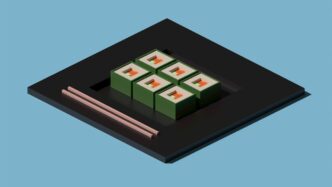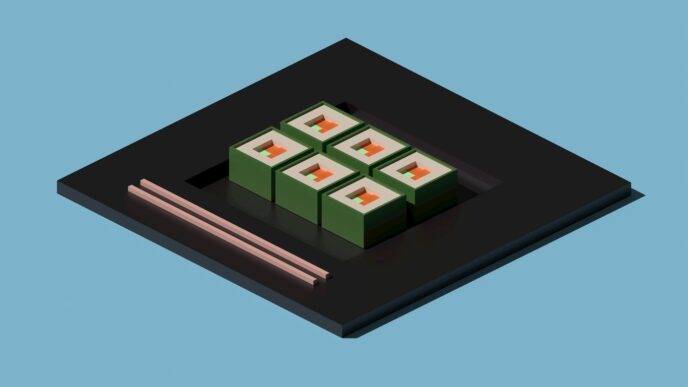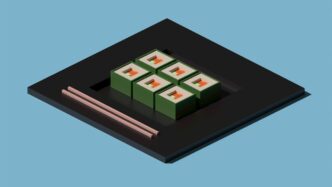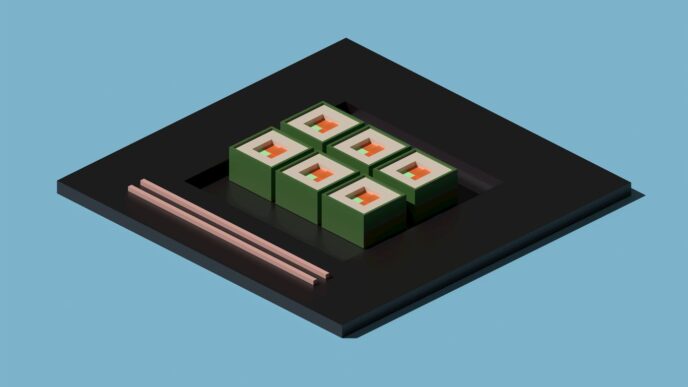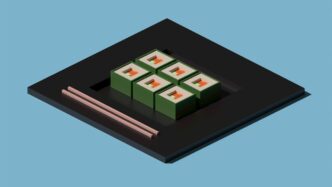Thinking about the cost of a D-Wave quantum computer in 2025? It’s a bit like trying to price a spaceship – exciting, cutting-edge, and not exactly something you pick up at the local electronics store. While owning one outright is still a huge investment, there are ways to tap into their power. This article breaks down what goes into the price tag and how you might access this next-level technology without needing a personal space program budget.
Key Takeaways
- The d wave quantum computer cost is influenced by factors like the number of qubits and the specific system type.
- Direct purchase of a full D-Wave system is very expensive, with older models like the 2000Q costing millions even years ago.
- Cloud-based access through services like D-Wave Leap offers a more affordable way to use quantum computing resources.
- D-Wave focuses on quantum annealing, a different approach than general-purpose quantum computers from companies like IBM and Google.
- While D-Wave shows revenue growth, its high market capitalization means investors should approach with caution, as future growth is already priced in.
Understanding D-Wave Quantum Computer Cost Factors
So, you’re curious about what makes a D-Wave quantum computer cost what it does, right? It’s not just a simple sticker price; there are a few moving parts that really influence the final number. Think of it like buying a car – the base model is one thing, but add all the bells and whistles, and the price goes up.
Influence of Qubit Count on D-Wave Pricing
One of the biggest things that affects the price is the number of qubits. Qubits are basically the building blocks of a quantum computer, kind of like the transistors in your regular computer, but way more powerful. More qubits generally mean a more capable machine, and that capability comes at a higher cost. It’s pretty straightforward: if you need more processing power for really complex problems, you’ll likely need a system with more qubits, which naturally bumps up the price tag.
Impact of System Type on Quantum Computer Cost
Then there’s the type of quantum system itself. D-Wave, for instance, focuses on a technology called quantum annealing. This approach is really good at solving specific kinds of problems, like optimization tasks. Other companies might be building different types of quantum computers, like gate-based ones, which are designed for a broader range of computations. The specific architecture and the technology used to build the system play a big role in its development cost and, consequently, its price. A specialized system might be cheaper in some ways but less versatile than a more general-purpose one.
Expert Support and Its Effect on D-Wave Expenses
Finally, don’t forget about the support that comes with it. Quantum computing is still pretty new territory for most people and businesses. So, companies like D-Wave often bundle in expert support, training, and consulting services. This isn’t just a quick phone call; it can involve dedicated teams helping you figure out how to use the quantum computer effectively for your specific needs. This level of hands-on assistance is a significant part of the overall expense. If you’re new to this, that support is probably something you’ll want, but it definitely adds to the cost.
D-Wave Quantum Computer Pricing in 2025
So, you’re wondering about the price tag on a D-Wave quantum computer in 2025? It’s not exactly like picking out a new laptop, that’s for sure. Figuring out the exact cost is still a bit of an art form rather than a hard science, given how fast this tech is moving.
When you’re looking at the numbers, a few big things come into play. First off, how many qubits does the system have? More qubits generally mean a higher price. Then there’s the type of system itself. D-Wave uses a method called quantum annealing, which is great for solving specific kinds of complex problems, like finding the best solution out of many possibilities. This is different from the gate-based computers that companies like IBM and Google are building, and it affects the cost.
Estimating D-Wave 2000Q Cost in Today’s Market
Back in 2017, the D-Wave 2000Q was reportedly priced around $15 million. Now, factor in inflation and the general advancement of technology since then, and that number would be significantly higher today. It gives you a rough idea, but it’s definitely not the current price.
Ballpark Figures for Full D-Wave Systems
Buying a whole D-Wave system outright is a massive investment. We’re talking hundreds of thousands of dollars just for the components. If you wanted a full setup, including all the bells and whistles and support, you’d likely be looking at figures in the tens of millions of dollars, similar to what other major players like IBM charge for their complete systems over several years. It’s a serious commitment, not something you just pick up on a whim.
Comparing D-Wave Costs to Industry Giants
When you compare D-Wave to the big names like IBM or Google, the pricing structures can look different. While D-Wave offers its Advantage2 system, which is quite capable, the cost of owning one outright is substantial. However, many businesses find it more practical to access quantum computing through cloud services. This approach avoids the huge upfront cost of purchasing hardware. For instance, accessing D-Wave’s capabilities via their Leap cloud service is a much more accessible option for most. It’s worth noting that investing $10,000 in D-Wave Quantum could be a gamble, as commercially viable quantum computing is likely more than a decade away. The company’s current business performance doesn’t align with its stock valuation, suggesting a significant risk for investors.
Accessing D-Wave Quantum Computing Services

D-Wave Leap Cloud Service Pricing
If you want to run experiments on a D-Wave quantum computer, you don’t have to buy a fridge-sized machine. The company offers remote access through its Leap cloud service, which is the gateway for most businesses and researchers. Leap pricing is based on resources you use—think of it a bit like renting server time, but with quantum bits.
Here’s a basic breakdown of how Leap pricing works in 2025:
| Usage Type | Approximate Cost (USD) |
|---|---|
| Small task (<5 secs) | $2-$10 per task |
| Research-level (1 hr) | $400-$1,100 per hour |
| Enterprise package | Custom, often $5,000+/month |
Actual charges depend on the number of problems submitted and the level of access you need—trial, personal, or business. Long-term contracts can bring discounts, but ad-hoc use is fairly straightforward if you just need to run a quick test.
Quantum Computing as a Service Models
More and more, folks see quantum computing as a subscription or pay-per-use service. D-Wave’s Leap is one of the main examples. If you’re curious about what this looks like in practice, here are three ways companies use the service:
- Pay-as-you-go, where you only pay for actual quantum processing time and tasks.
- Monthly or annual seats for regular users in research or larger business teams.
- Enterprise deals with included support, priority access, and software integration.
Some customers start small, testing algorithms, and then move up to more committed plans as they see value.
Cost Variations in Cloud-Based Quantum Access
The cost to use D-Wave via the cloud can vary by several factors. Key things affecting your bill include:
- Compute Time: The longer you want on the quantum processor, the higher the cost.
- Support Level: Higher-tier support and consulting inflate monthly bills. Enterprise clients often pay more for faster response and project guidance.
- Concurrent Users: Teams with multiple people accessing the system might pay for seat licenses or larger packages.
- Data Handling: If you need more secure or higher-priority handling of your inputs and results, expect a steeper price.
Overall, it’s a lot easier and far more affordable to experiment with quantum computing through the cloud compared to buying a multi-million dollar machine outright. This makes the technology way more accessible to smaller teams and individual developers. But, prices still add up if you’re running big batches of jobs week-in and week-out, so planning ahead really matters.
D-Wave’s Financial Performance and Market Position
D-Wave Revenue Growth and Client Acquisition
D-Wave’s been making some noise lately, and it’s not just about their fancy quantum computers. They’ve been racking up some serious numbers. As of the first nine months of 2025, they reported around $21.8 million in revenue. That might sound small compared to tech giants, but for a company in this early stage, it’s a pretty big deal. They’ve also seen some impressive year-over-year growth, with Q3 2025 revenue doubling to $3.7 million. Plus, they’ve secured a bunch of new business, with bookings totaling $2.4 million in Q3 and an additional $12 million after the quarter ended. That’s setting them up for more growth down the line. They’re even working with big names like BASF and a major airline, which could mean even bigger deals in the future. They’ve also expanded globally, with new engagements in Japan and Turkey.
Understanding D-Wave’s Market Capitalization
So, D-Wave’s stock, QBTS, has seen some wild swings. It’s had periods of massive gains, with some reports showing over 1,700% returns in a year, making it look like a millionaire-maker stock. However, it’s also experienced corrections, dropping significantly from its highs. As of mid-November 2025, the market cap is hovering around $8 billion. This valuation is pretty high, especially when you look at their current sales figures. Some analysts think that a lot of future growth is already priced into the stock. It’s a bit of a gamble, really. The company’s ability to turn its technological advancements into consistent, large-scale revenue will be key to justifying this valuation.
Investor Considerations for D-Wave Stock
If you’re thinking about investing in D-Wave, there are a few things to chew on. On the one hand, they’re a pioneer in quantum computing, with a ton of patents and a strong focus on innovation. They’ve got a healthy cash balance, which is good for an early-stage company, meaning they probably won’t need to sell more stock anytime soon. Analysts generally seem positive, with many giving it a "Strong Buy" rating and setting price targets that suggest potential upside. However, it’s not all sunshine and rainbows. They’re spending a lot on research and development, which leads to operating losses. Plus, the timeline for quantum computing to become truly mainstream and commercially viable is still uncertain, with some experts predicting it could be as late as 2040. So, while the potential is huge, there’s also a fair bit of risk involved. It might be worth waiting for a dip in the stock price before jumping in.
The Future of D-Wave Quantum Computer Cost
Projected Trends in Quantum Hardware Expenses
So, what’s next for the price tags on these super-powered machines? It’s a bit like trying to guess the price of a smartphone five years ago – tricky, but we can make some educated guesses. Right now, building quantum computers is still pretty expensive, mostly because we’re still in the early research and development phase. Think of it like the early days of personal computers; they were huge, clunky, and cost a fortune. As the technology gets better and more companies get involved, we’re likely to see the cost of the hardware itself start to come down. It’s not going to happen overnight, but the trend is generally pointing towards more affordable systems down the line.
Factors Influencing Future D-Wave Pricing
Several things will play a role in how D-Wave’s prices shake out. For starters, how quickly they can make their systems more powerful and reliable will matter a lot. If they can pack more qubits into their machines or make them less prone to errors, that’s going to increase their value. Also, the more companies and researchers actually start using D-Wave’s technology for real-world problems, the more demand there will be. And, of course, competition is a big one. As other companies develop their own quantum tech, D-Wave will need to stay competitive on price.
- Technological Advancements: New breakthroughs in quantum hardware design and manufacturing.
- Market Demand: Increased adoption by businesses and research institutions.
- Competitive Landscape: Pricing strategies of other quantum computing providers.
- Scalability: The ability to produce quantum computers more efficiently at larger volumes.
Commercial Viability and Cost Accessibility
Ultimately, the goal is to make quantum computing accessible. Right now, owning a full D-Wave system is a massive investment, likely in the millions. But that’s where services like D-Wave Leap come in. They let you access the power of quantum computers without buying the whole thing. As these cloud services get more refined and the underlying hardware costs decrease, we should see more businesses, even smaller ones, being able to afford to experiment with and use quantum computing. The real sweet spot will be when the cost of accessing quantum computing power is low enough that it makes clear business sense for a wide range of applications. It’s a long road, but the progress we’re seeing suggests it’s a future that’s getting closer.
D-Wave’s Technological Innovations and Costs
D-Wave’s Quantum Annealing Approach
D-Wave stands out in the quantum computing world because it uses quantum annealing instead of the more common gate-based method. This means D-Wave systems are specially built to find optimal solutions for tough problems, like optimization and materials simulation. Quantum annealing is all about finding the lowest-energy state possible, which can be handy for real-world industry cases. It’s a very focused type of quantum computing — it doesn’t do everything, but it’s uniquely good at certain types of tasks where traditional computers struggle.
- Quantum annealing is efficient for optimization problems.
- Not general-purpose—has a niche set of applications.
- Often easier to scale up in terms of qubit numbers compared to gate-based systems.
Compared to IBM’s and Google’s machines, which use a gate model, D-Wave’s systems are purpose-built and tend to have higher qubit counts (in the thousands) but with very different use cases.
Advantage2 System Capabilities and Cost Implications
Advantage2 is D-Wave’s latest quantum annealer, and it packs some serious hardware. This system is about the size of a large appliance, but its price is anything but household-level — we’re talking many millions. The increased qubit count and improved connectivity make it a big step up from earlier machines. For example, D-Wave’s recent booking of €10 million for just 50% of an Advantage2 system’s capacity shows the premium placed on access to this hardware (Q4 2025 booking of €10 million).
Here’s a snapshot of some cost-impacting features:
| Feature | Impact on Cost |
|---|---|
| Qubit Count (~5,000+) | Drives up expense |
| Enhanced Connectivity | Adds to build costs |
| Cooling & Infrastructure | Substantial outlay |
| Support and Maintenance | Ongoing service fees |
So it’s not just the machine, but the entire setup—maintenance, cooling, and software—that adds up quickly.
D-Wave’s Investment in Research and Development
If there’s one thing D-Wave isn’t shy about, it’s investing in new ideas. In the first nine months of 2025, they allocated $37 million just for research and development. On top of that, the company has over 280 US patents and about 550 more grants or applications globally. The team includes about 50 PhDs, and they’re always working on the next quantum breakthrough. This heavy R&D spending means:
- Ongoing improvements to hardware and software.
- Development of industry-specific quantum applications.
- Regular patent filings to defend unique approaches.
The trade-off is a high cash outflow, but it’s helped D-Wave keep its spot as a leader in quantum innovation. This R&D commitment is one reason their systems aren’t cheap — but it’s also what keeps them at the front of the field. As quantum computers get more powerful and useful for business, you can bet D-Wave’s constant stream of new technology is going to be reflected in both their costs and their pricing structure.
So, What’s the Bottom Line on D-Wave’s Price Tag?
Alright, let’s wrap this up. Thinking about buying a D-Wave quantum computer in 2025? Well, it’s still not like popping down to the electronics store for a new laptop. These machines are seriously complex and, frankly, super expensive. While D-Wave offers cloud access through services like Leap, which is way more practical for most folks, actually owning a full system is a massive investment, likely costing millions. Prices are all over the place depending on what you need, like the number of qubits and the support you want. It’s a big leap from the $15 million estimate from years ago, and costs have only gone up. For now, cloud access is the way to go for most businesses and researchers wanting to play with quantum power.
Frequently Asked Questions
How much does a D-Wave quantum computer cost?
Buying a full D-Wave quantum computer is super expensive, costing millions of dollars. Think of it like buying a super-advanced, specialized piece of equipment. For example, the D-Wave 2000Q was estimated to cost around $15 million back in 2017, and prices have only gone up since then due to inflation and advancements. Most systems today cost hundreds of thousands of dollars just for the parts.
Can I use a D-Wave quantum computer without buying one?
Absolutely! Instead of buying a whole machine, you can use D-Wave’s quantum computers through their cloud service called D-Wave Leap. This is like renting time on the computer. It’s a much more affordable way to access their powerful technology for your projects and experiments.
What makes quantum computers so expensive?
Quantum computers are costly because they are incredibly complex to build and operate. They need special materials, super-cold temperatures maintained by fancy cooling systems, and advanced error correction technology to work correctly. Plus, the number of tiny parts called qubits you want, and the level of expert help you need, all add to the final price.
How does D-Wave’s technology differ from others like Google or IBM?
While companies like Google and IBM are building general-purpose quantum computers, D-Wave focuses on a specific type called quantum annealing. Think of it as a specialized tool designed to find the best solutions to really tricky problems by finding the lowest energy state. Their Advantage2 system, for instance, is built for real-world tasks like simulating materials and improving artificial intelligence.
Is quantum computing ready for everyday businesses yet?
Quantum computing is still a very new technology, kind of like when the internet first started. While D-Wave believes their systems are ready for some real-world uses, many experts think it will still take many years, maybe even a decade or two, before quantum computers are widely used and affordable for most businesses. Right now, it’s mostly used by big companies and research groups.
What is the future cost of quantum computers?
Experts predict that as quantum technology gets better and more people make these machines, the cost will likely go down over time, making them more accessible. However, for now, the costs are still very high because we are in the early stages of research and development. Factors like new discoveries, how much people want them, and how many companies are making them will all affect future prices.







